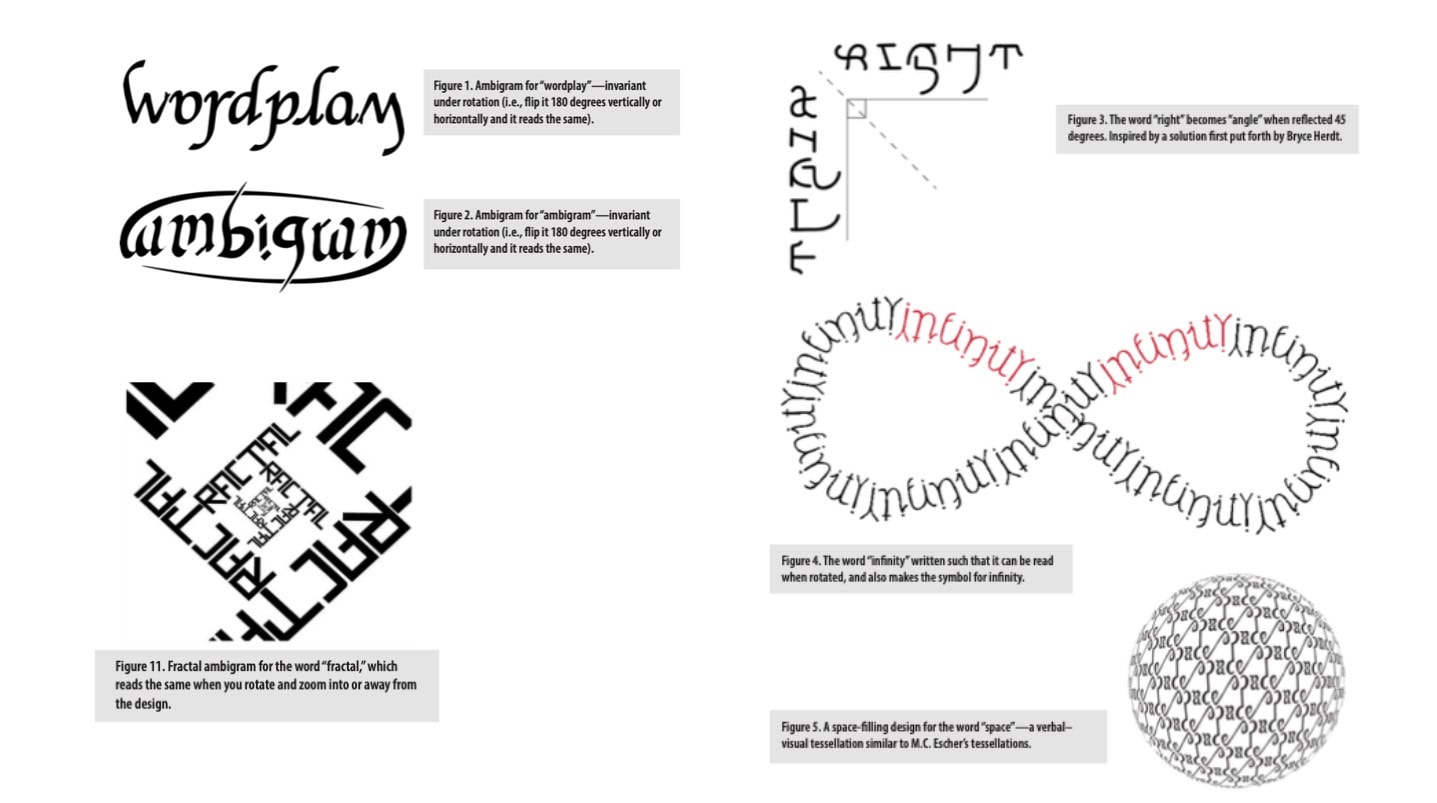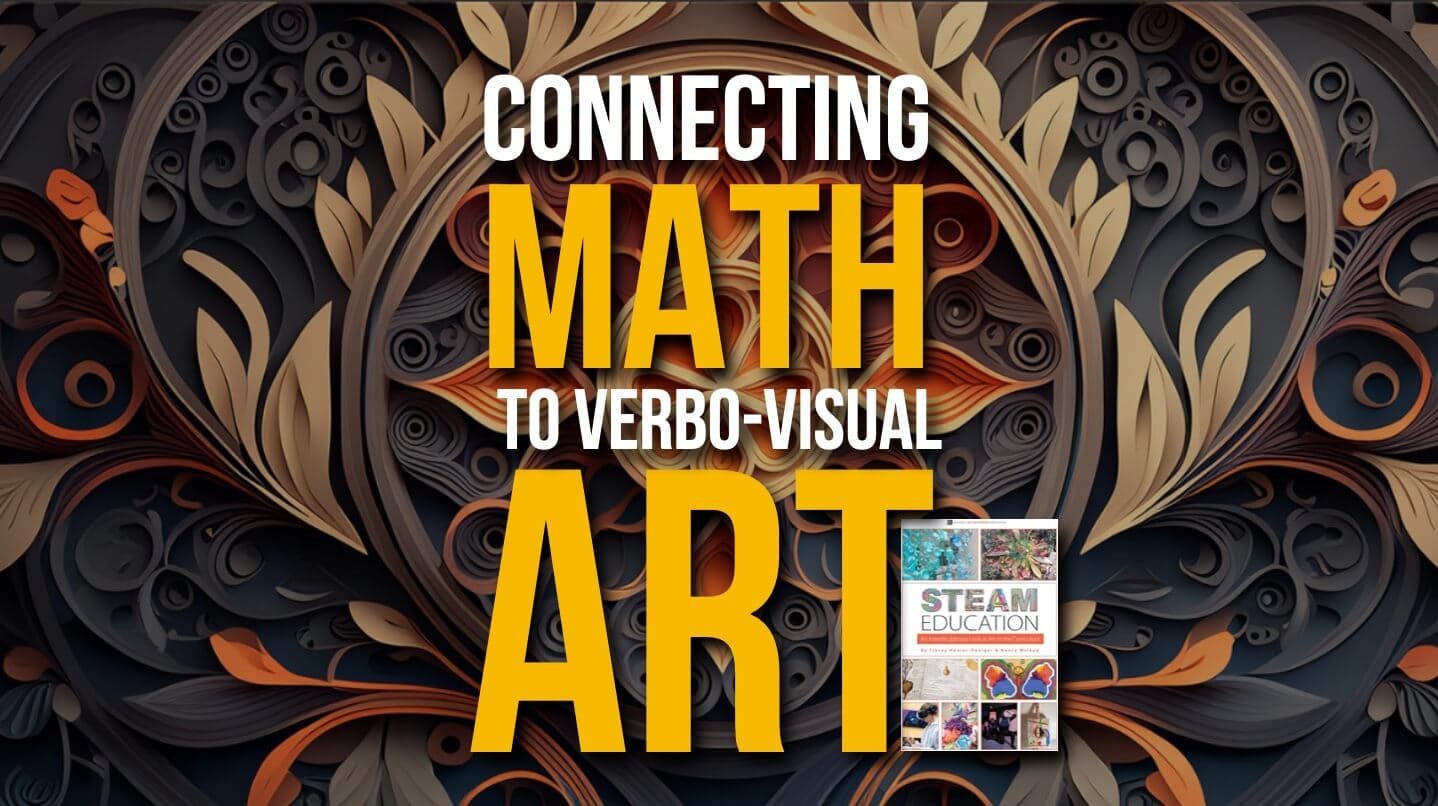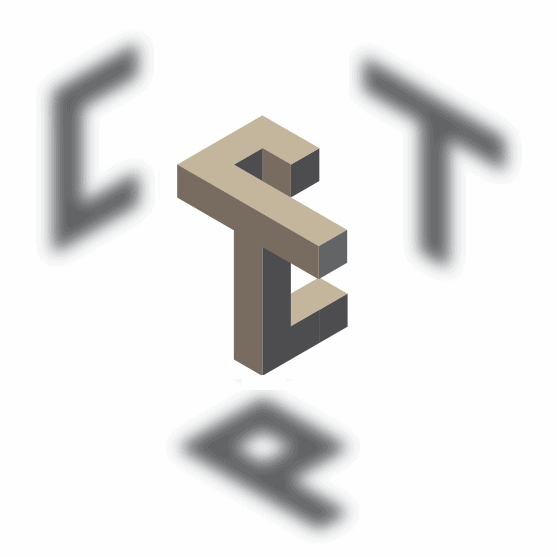Ambigrams are a form of visual wordplay in which words are written/designed such that they can be read or interpreted in multiple ways. Ambigrams exploit how words are written. In doing so, they bring together the mathematics of symmetry, the elegance of typography, and the psychology of visual perception to create surprising, artistic designs.
I have been creating ambigrams and other such oddities for decades now. My ambigram designs and their relationship to creativity and mathematics was the focus of an exhibition at the MSU Museum, titled Deep-Play: Creativity in Math & Art through Visual Wordplay. I was also interviewed on Michigan Radio about my exhibition. I have also written a series of articles on the relationship between ambigrams and mathematics with my friend Gaurav Bhatnagar for the math-educator’s magazine At Right Angles.
Ambigrams are a wonderful way to explore and learn ideas related to mathematics in a creative manner. In a recently published chapter Danah Henriksen and I explore the application of these typographical oddities to education. In the chapter we provide examples both from my own designs as well designs created by students as part of a workshop I conducted a few years back.
Abstract, citation and a link to a pre-publication version given below. Below are some examples of ambigrams from the article.

Mishra, P., & Henriksen, D. (2024). Connecting Mathematics to Verbal–Visual Art. STEAM Education: An Interdisciplinary Look at Art in the Curriculum. Eds. Tracey Hunter-Doniger & Nancy Walkup. National Art Education Association. p. 200-213
Abstract: In this piece, we will discuss the use of “ambigrams”—a neologism created by the cognitive scientist Douglas Hofstadter (Polster, 2000)—for exploring and learning about mathematical symmetry. Ambigrams are a form of visual wordplay focused on writing words as an art form that allows them to be read in multiple ways. We situate this in a real- world math lesson done with high school students of multiple ages, where they created new and surprising ways of writing words such that they could be read when rotated 180 degrees, or when reflected in a mirror or as a fractal. These activities required learners to see words both as carriers of meaning and as geometric shapes that can be artfully manipulated and played with. For the students, the process was at times frustrating and challenging yet fun, and it connected visual artistry with mathematical concepts for a unique, creative learning activity.



0 Comments